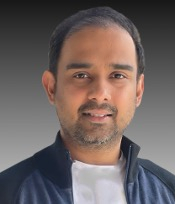
Sai Prakash Narasingu is a distinguished professional with over 10 years of experience in Cloud technologies, having worked with leading companies to drive innovation and optimization. As a specialist in Observability, he has consistently helped organizations enhance their monitoring and performance strategies. In addition to his professional achievements, Sai is an active Open-source contributor, reviewing code for prominent open-source projects and helping to shape innovation. Sai sees Observability eventually a self-healing solution through AI powered actions.
Q: Sai, can you share an overview of your expertise and the impact of your work?
Sai: Certainly! My expertise lies in architecting and deploying large-scale enterprise grade cloud observability solutions that ensure resilient, high-performing, and secure cloud applications. I have worked with leading software companies, building global observability systems using open-source technologies that process large volumes of data, and running analytics to provide deep insights. My work has provided companies with deep visibility into their operations, enabling multi-billion dollar businesses to run more efficiently and helping SaaS companies with over $100 million in recurring subscriptions optimize their performance and growth.
Q: With your extensive experience in cloud technologies, how have you guided businesses in optimizing their cloud strategies?
Sai: Over the years, I've engaged with various Fortune 50 companies, providing technical direction and architectural recommendations to align with industry best practices for end-to-end visibility. My guidance has helped organizations identify bottlenecks, optimize resource utilization, and enhance overall system performance, ultimately improving operational efficiency and user experience. I've played a crucial role in guiding businesses through cloud migration strategies. I've helped organizations assess their current infrastructure, identify workloads suitable for business needs, and guide architectures for speedier digital transformations.
Q: Observability is evolving rapidly. How do you see AI and analytics shaping the future in this space?
Sai: The intersection of cloud observability and intelligent analytics is incredibly exciting. As observability solutions continue to evolve, the sheer volume of this data can become overwhelming. AI-powered analytics can detect patterns, identify anomalies, and Automate remediation and incident management. I've published research articles detailing how AI can be leveraged to unlock speedier solution innovation on how AI can improve power utilization, software development efficiency, and real-time decision-making for businesses, data engineering, ensuring that cloud operations remain intelligent, cost-effective, and highly responsive.
Q: You've worked extensively with open-source technologies. Why do you advocate for them in observability?
Sai: Open-source technologies bring flexibility, innovation, and cost efficiency to observability solutions. I've worked extensively with Grafana, Telegraf, Prometheus, and Loki, which offer robust monitoring, visualization, and log aggregation capabilities. By leveraging open-source tools, companies can customize their observability stack, avoid vendor lock-in, and benefit from a thriving developer community that continuously enhances these solutions.
Additionally, I've contributed to the open-source ecosystem through pull request reviews for prominent projects like OpenAI, Facebook React, and OpenTelemetry. These contributions have given me deep insights into the inner workings of various observability and AI-related frameworks. I'm also a source code contributor for OmniAI-Utils, an open-source AI project focused on automating AI tasks. My involvement in these projects further strengthens my belief in the power of open-source software to drive innovation and provide scalable, customizable solutions in observability and beyond.
Q: Looking ahead, what excites you the most about the future of cloud infrastructure and observability?
Sai: The future is all about scalability, automation, and intelligence. I see observability moving beyond just monitoring, towards a state where systems are self-healing, predictive, and deeply integrated with artificial intelligence. The ability to correlate infrastructure performance with business outcomes will be a game-changer. Additionally, enhancing security, reducing cloud costs, and driving real-time insights through observability will continue to be a major focus.
Q: Finally, what advice do you have for companies looking to improve their observability strategies?
Sai: Companies should focus on scalability, flexibility, and real-time insights. Start by adopting a strong open-source foundation, ensure your observability stack supports full visibility across vendor agnostic infrastructure and applications, and invest in automation to reduce manual intervention. Most importantly, leverage observability not just as a monitoring tool, but as a business enabler—one that helps drive operational efficiency, enhances customer experience, and fuels innovation.
As Sai Prakash Narasingu continues to be prepared for AI driven intelligent insights, his work is setting new benchmarks for how enterprises future-proof their observability strategy. His expertise, spanning infrastructure monitoring, application performance monitoring, and SaaS architectures, is making a lasting impact on the technology landscape, one where observability is not just about visibility, but about intelligence, efficiency, and transformation.









